03. The Artist’s Body in the Age of Genomic Reproduction
- Barbara Ursula Oettl
Curating the living—be it flora, fauna, or the human—has always held risks. Edward Steichen’s Delphiniums (1936) is a good early example of the application of traditional and new chemical influences to established breeding methods for plants, such as selection and hybridization, toward the creation of a work intended as art. The Delphiniums, on display in vases, withered away after a week on view at New York’s Museum of Modern Art. To this day, the latest scientific standard of knowledge is unable to completely prevent the living from growing, changing, aging, or dying while on view in a museum setting. With living art, one can never be entirely sure what to expect, which at best is part of the experience, but is hard to accept for many people involved in creating displays of such art: curators, visitors, artists, and last but not least the art itself, especially if we are talking about art that is alive.
One work of art that could not be hindered from not prospering at all, indeed from withering away, was a restaging of Hans Haacke’s Grass Grows (1969). When the grass refused to grow in the freshly sown earthwork presented in a Land art retrospective at the Haus der Kunst in Munich, it was not favorably received by the public. At the turn of the millennium, the press released pictures of the artist Eduardo Kac holding his transgenic creation GFP Bunny Alba (2000), a bioluminescent rabbit, but the French laboratory where the genetically altered animal was bred ultimately refused to hand the never-to-become-domestic pet over to the artist. And during dOCUMENTA (13) in Kassel, Germany, in 2012, two artists had to deal with partly unwanted outcomes of their works in public space: the butterflies Kristina Buch had released in a little patch of garden for her installation The Lover escaped into freedom as intended by the artist, never to be seen again by visitors, and the beehives that Pierre Huyghe had brought to his artificially created biotope Untilled had to be replaced twice when the colony died out.
These things happen. But instead of trying to prevent them, or criticizing the museum, the curators, or the art when they do, it should be understood that such glitches may be an essential side effect of living artworks. Indeed, there is a need to understand how and why art that is alive should have all the same privileges and disadvantages as the living beings who come to visit it. A living exhibit may prosper or wither, and both might be absolutely appropriate for the work of art and its significance. In the foreseeable future this may no longer hold true, as the various sources of error may be eradicated by the latest discoveries in medicine and biotechnology. What if the flaws of the living are one day eliminated by achievements in scientific research?
In 2012 the Japanese cell researcher Shinya Yamanaka and the British biologist John B. Gurdon received the Nobel Prize for their successful reprogramming of human cellular material. Reducing a cell to its original status of pluripotency is desirable in a medical context, as only a not-yet-specified cell has the ability to develop into almost any other cell type in an organism. The baseline in a medical and also in an artistic context is that whatever holds a complete set of DNA is able to reproduce that set of DNA. A layperson cannot be expected to understand the quintessential forebodings held within the groundbreaking potential of this discovery. But maybe art can enlighten in this case. This essay will demonstrate how and why bioartists are addressing the riddles of human life and death, and how to offer these insights to the public in a well-curated frame. After all, one thing is clear: by passing down their complete DNA and forcing us (curators, conservators, visitors, art historians) to make existential decisions about life and death, artists raise ethical and legal questions regarding who we are—and for how long.
Bioartists operate at the interface between medicine, biology, and informatics. The knowledge and techniques that have become available to the biotechnological sciences are now available to fine artists as well. What the two disciplines—science and art—disagree on is less bioscientific methodologies than the motivation in applying them. The fine arts can offer ways to articulate questions and confront both scientists and the public with provocative statements on biotechnological accomplishments and biopolitical power. Such artists have devoted themselves to suggesting what consequences are to be expected in the face of a constantly shifting and modifiable conditio humana that has been downgraded to a mere information pool on growth, health, biological functions, age, and disease.
Walter Benjamin’s much-discussed essay on the aura of an artwork that is reproduced () enters its next round with these case studies on artists who hint at the potential to hybridize and clone the human body with the (un)predictable prospect of releasing their personae into the future, into the age of the genomic reproduction of the artist’s body.
Marc Quinn
The British Marc Quinn is widely known for his series Self, portraits cast from the artist’s own blood. Beginning in 1991 and every five years thereafter, Quinn has produced a new version (fig. 3.1). In order to obtain the material for this sculptural piece, the artist collects four and a half liters of his own blood. It goes without saying that this artwork cannot survive in a typical museum storage or display context; it is coated with or immersed in silicone and needs to be kept at a constant temperature of -18°C. The cast is housed in a glass cabinet positioned on a custom-built cooling device made of stainless steel.
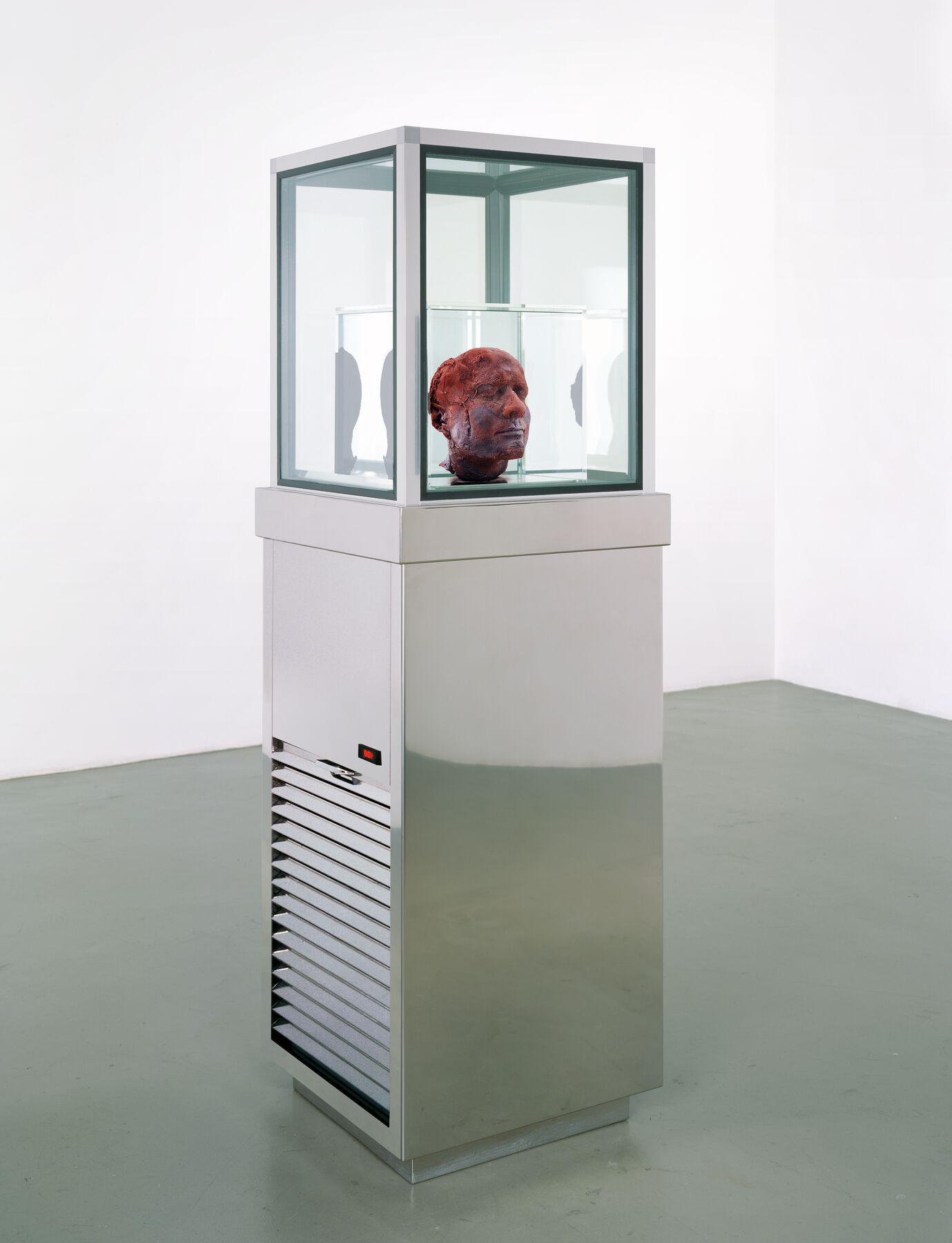
It took several incarnations of Self before Quinn developed a technique to hold it in a state of permanent frozen equilibrium. The first cast needed to be re-modeled four times. In the first attempts, Quinn cast the head directly from the mold and put it into a showcase at -18°C. But since the vulnerable sculpture had not received a coating, the air caused the water content in the blood to rise to the surface of the cast and down toward the coolest area of the case—the bottom. This disintegration of Self prompted the next iteration to be sealed with a transparent silicone skin. But this solution did not last long; over time, little holes developed in the silicone, through which the blood that had started to coagulate showed. This mishap was successfully corrected by immersing the blood head in liquid silicone cooled to -18°C (, 7).
Today, different versions of Self are in collections all over the globe. When in 2009 the Foundation Beyeler in Basel, Switzerland, organized a retrospective of the artist’s oeuvre, four of Quinn’s Selfs were flown to Switzerland, creating for a brief moment, with the addition of the artist, a quasi-identical-quintuplet scenario.1 Unfortunately, the changing air pressure in the airplane’s cargo hold compromised the seals within the cabinets, which caused condensation on the glass. This problem has now been solved by heating the panes to counteract the cooling system for the heads and thus provide a clear vista on both sides. Unless any of these devices is unplugged, the Selfs can be displayed in museum settings as intended, indefinitely. And as the casts hold the artist’s complete genetic information, possibly he will outlive every single one of us.
It is worth noting that in 2001 Quinn made another interesting work from his own bodily components, Cloned DNA Self Portrait 26.09.01 (fig. 3.2). By using standard biotechnological methods of cloning, the artist’s DNA was extracted, replicated, and framed in a transparent colony of bacteria to keep it alive (, 309). In the age of a possible genetic reprogramming of unipotent cells such as blood and sperm, his cloning options are infinite.
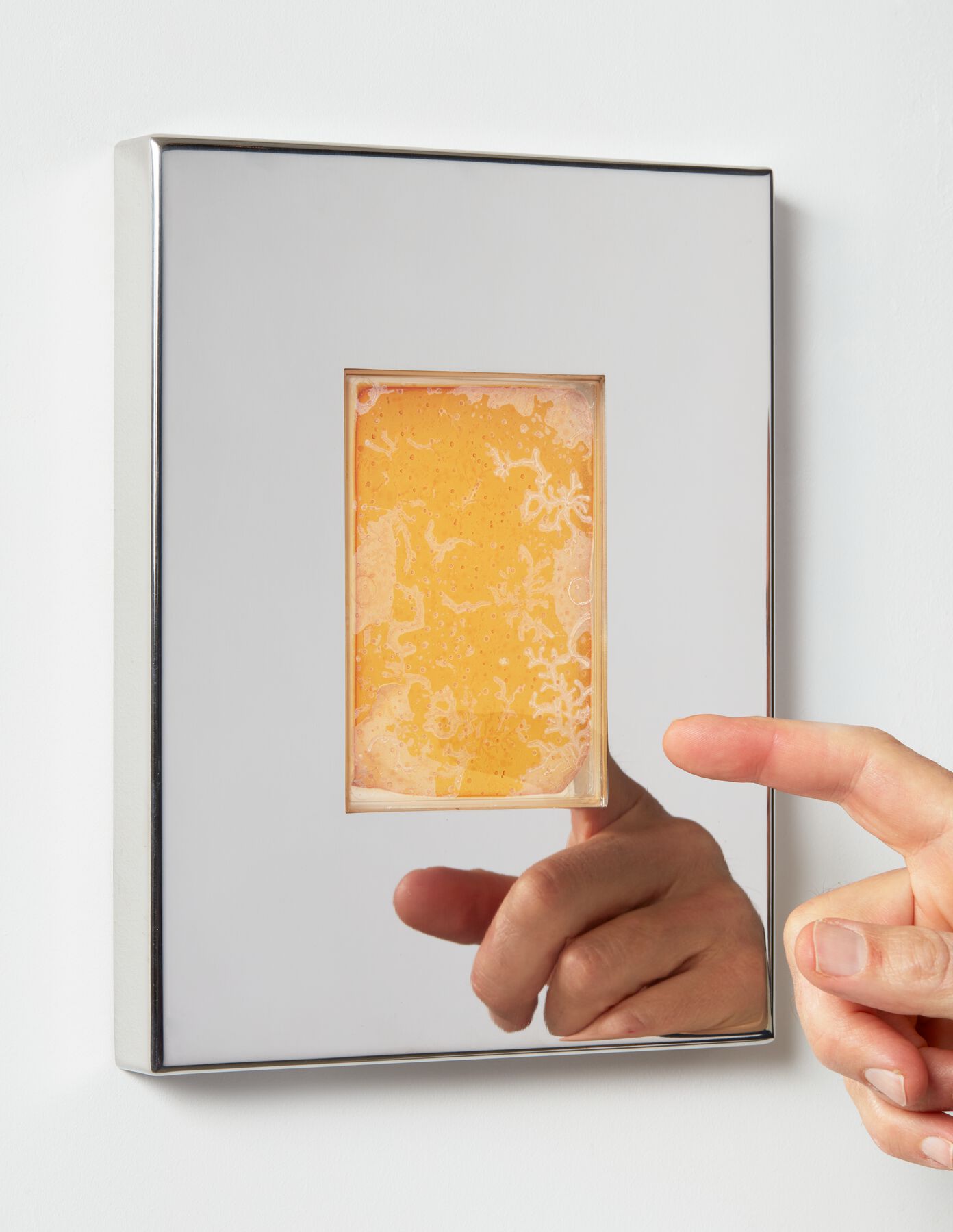
ORLAN
The French multimedia artist ORLAN is taking this concept even further. ORLAN has radicalized body art with her long-term-performance La Ré-Incarnation de Sainte ORLAN. From 1990 to 1993, ORLAN underwent nine “surgical manipulations,” (, 63) that including skin transplant, liposuction, facial surgery, and the reshaping of her flesh and bones. During these procedures, ORLAN only received local anesthesia, which allowed her to respond to audience questions sent by fax or videoconference, provided she was not prevented from speaking by surgical necessities (fig. 3.3). From these performances she created recordings, videotapes, and even relics of biological material (10 grams of her flesh apiece) for sale on the art market. The vials and reliquaries contain her blood, fat, and tissue. All the products are certified by ORLAN’s signature and the following inscription: “This is my body, this is my software” (fig. 3.4).
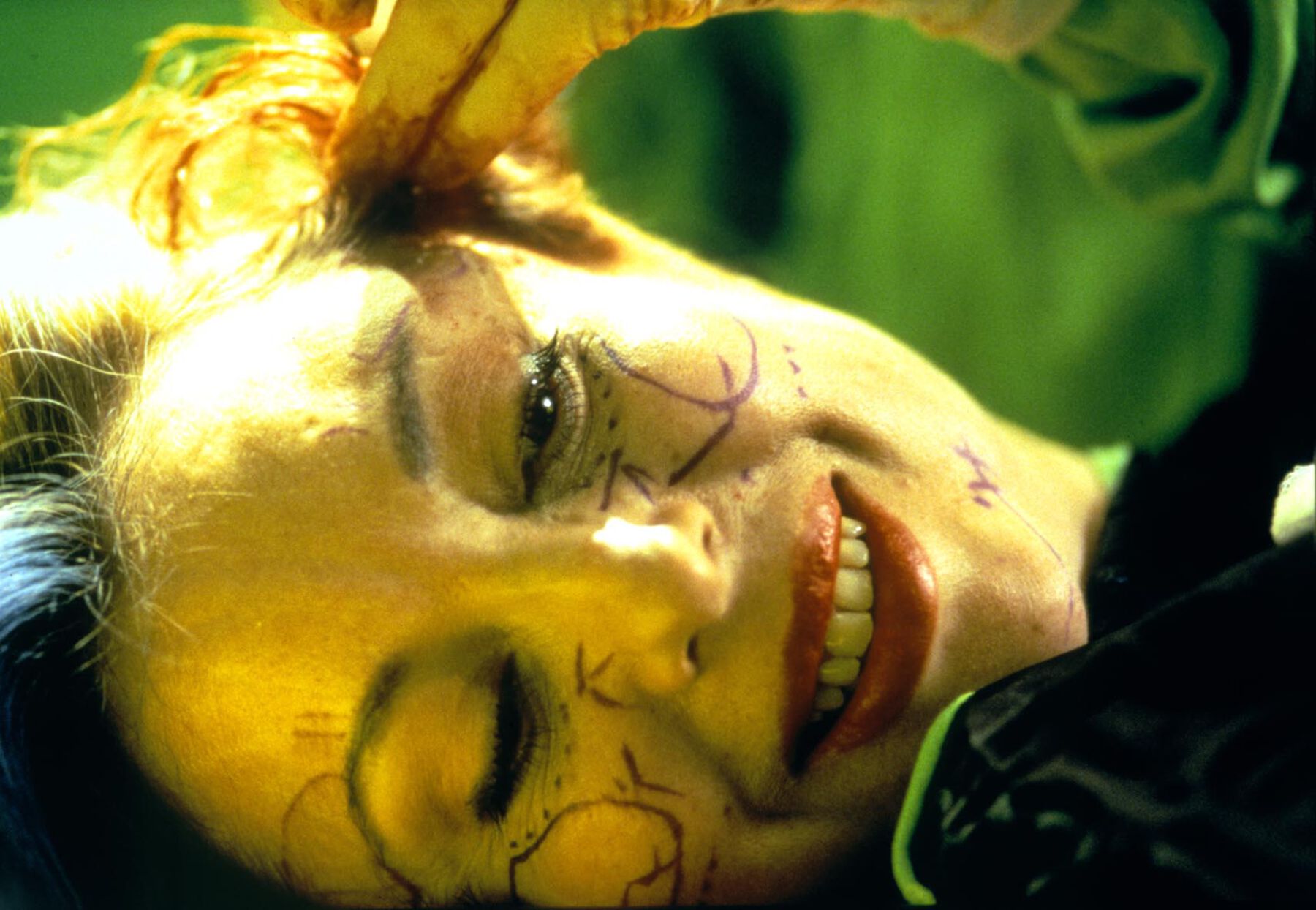

ORLAN’s live performative oeuvre has been personally witnessed by an exceedingly small number of spectators. However, it is possible to access the testimony of her performances. According to Jens Hauser there are three possibilities to collect, preserve, and exhibit ephemeral art practices in the gallery space: there is the initial spark of the live performance; there are documents that remind the viewer of what and how it happened such as photographs, videos, and sketches; and there are the physical remains of the processes that allow the contemporary visitor to trace back the events on a physical level (, 91–92). ORLAN’s oeuvre includes all of these options. From a conservation viewpoint, her once-living materials pose particularly pressing questions regarding their safekeeping. For secure preservation of this material the biopsies are sustained in resin, and the collectibility of the relics is guaranteed by their welded, burglar-proof receptacles. In the case whereby an art museum accepts ORLAN’s last will—to exhibit her body after her death—it would not be acting any differently than a museum of natural history exhibiting medical and histological preparations, or than churchgoers adoring the human remains of saints and martyrs. With her relics, ORLAN takes the measure of physical possibilities to convey her post-mortal persona.
In recent years ORLAN has begun to refine the methods and options of her reincarnation, including exploring the co-culturing and fusion of human and nonhuman cells and tissue. Her first project using biotechnology and the living matter of others is The Harlequin’s Coat (2007–8, fig. 3.5). The idea was to hybridize skin tissue of various ethnicities (white and Black) and other species (marsupial and bovine) with her own skin cells (, 116–17). These were shown intermingling in vitro in constantly moving petri dishes that were attached to the back of a Harlequin’s gown.2 But the impure cell-bastard did not morph infinitely: “Of course, all the cells or bacteria are dead.”3

The current state of science does not allow for complete transendence of the mortal body—in other words, eternal life. Future knowledge and insights will continue to illuminate the healed, modified, transformed, hybridable, exchangeable, and maybe someday-obsolete body. Just like science, ORLAN is struggling “against the innate, the inexorable, the programmed, Nature, DNA (which is our direct rival as artists of representation), and God!” (, 325). ORLAN has made many attempts to outpace science, to outlive the body, and to keep the audience in literal touch with her tissue, cells, and flesh within the museum setting. For the moment she has stored new stem cells and tissue and bacteria cultures at the Institut Pasteur in Paris, where they are kept in a freezer at -80°C.
When the time is right, her cells might fuse with ORLANoid (2018, fig. 3.6), her look-alike robot, thus extending ORLAN’s body by means of electronically and digitally encoded information. Currently, the ORLANoid is capable of deep learning and has the ability to react and interact through language skills, giving it artificial, collective, and social intelligence. To remain on the safe side—legally, biotechnically, curatorially, and concerning problems of eventual contagion—ORLAN is working hand in hand with professionals such as the Tissue Culture & Art Project.4
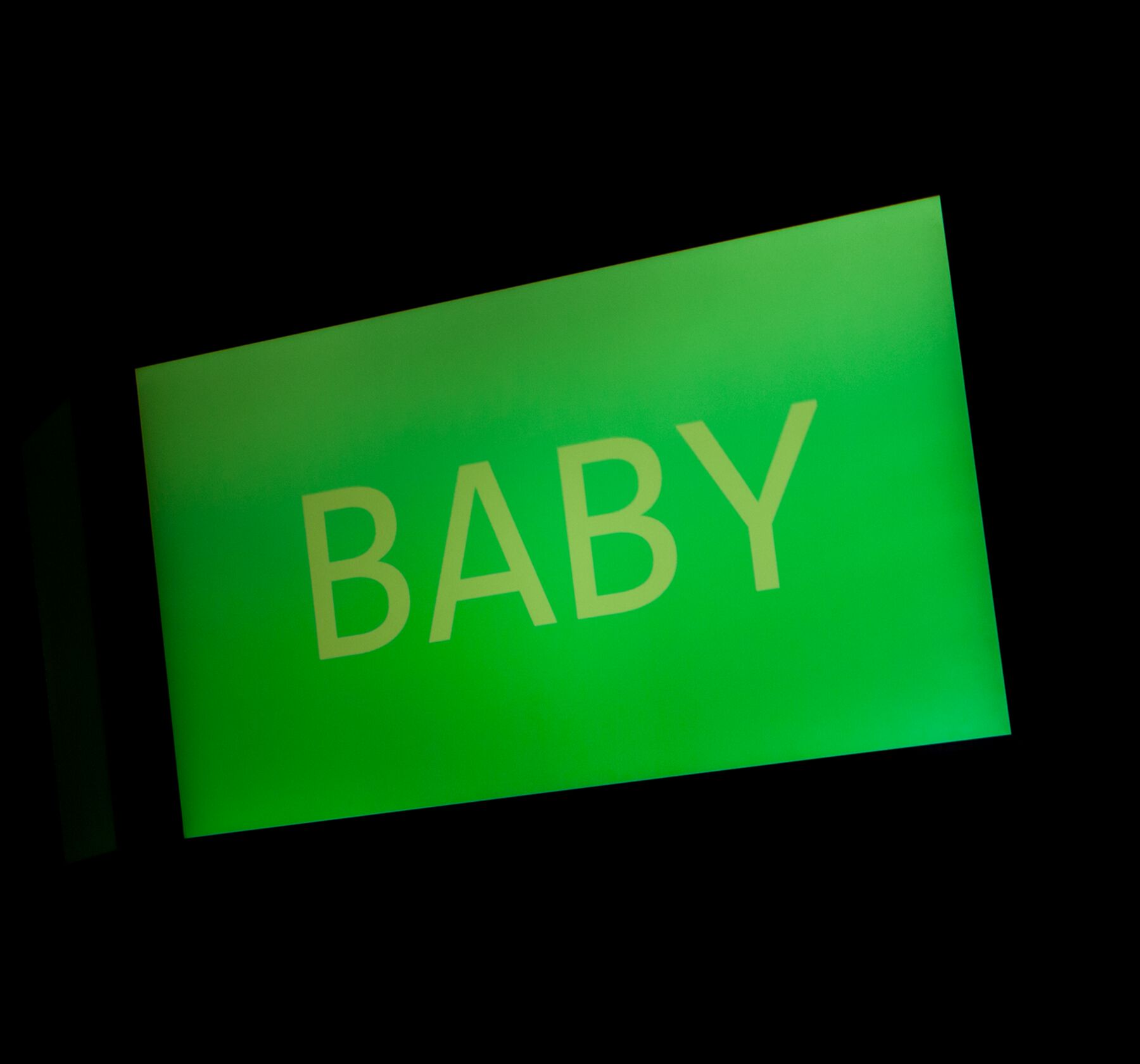
The Tissue Culture & Art Project
The formation of the artistic collective the Tissue Culture & Art Project (TC&A Project) in 1996 led in turn to the foundation of the collective’s current workplace, the Art & Science Collaborative Research Laboratory (aka SymbioticA), situated at the School of Anatomy and Human Biology at the University of Western Australia, Perth, and at the Tissue Engineering and Organ Fabrication Laboratory at Massachusetts General Hospital / Harvard Medical School.5 SymbioticA was the first institution in the world to offer artists and researchers the possibility to engage in wet biology by using tissue engineering and biotechnological tools within the surroundings of a research laboratory at a university science department. Its output is thus far dedicated to widening scientific and humanistic perspectives, particularly in the fields of bioengineering and transgenics, and producing art at the intersection of bio (nature) and tècne (art, science, and technology). SymbioticA functions as the home base for TC&A Project and has developed and applied tissue culture and tissue engineering methods to create so-called semi-living sculptures (fig. 3.7). These artworks shed light on humanity’s relationship and behavior toward partially living systems—a new category of yet-unclassified object-subjects. So far, no rights or status have been given to these semi-living organisms; they are a no-man’s-land in terms of biological, legal, and ethical valuations and judgments. The production, mutation, and hybridization of the living with the nonliving and the human with the nonhuman remains a scientific and ethical balancing act.
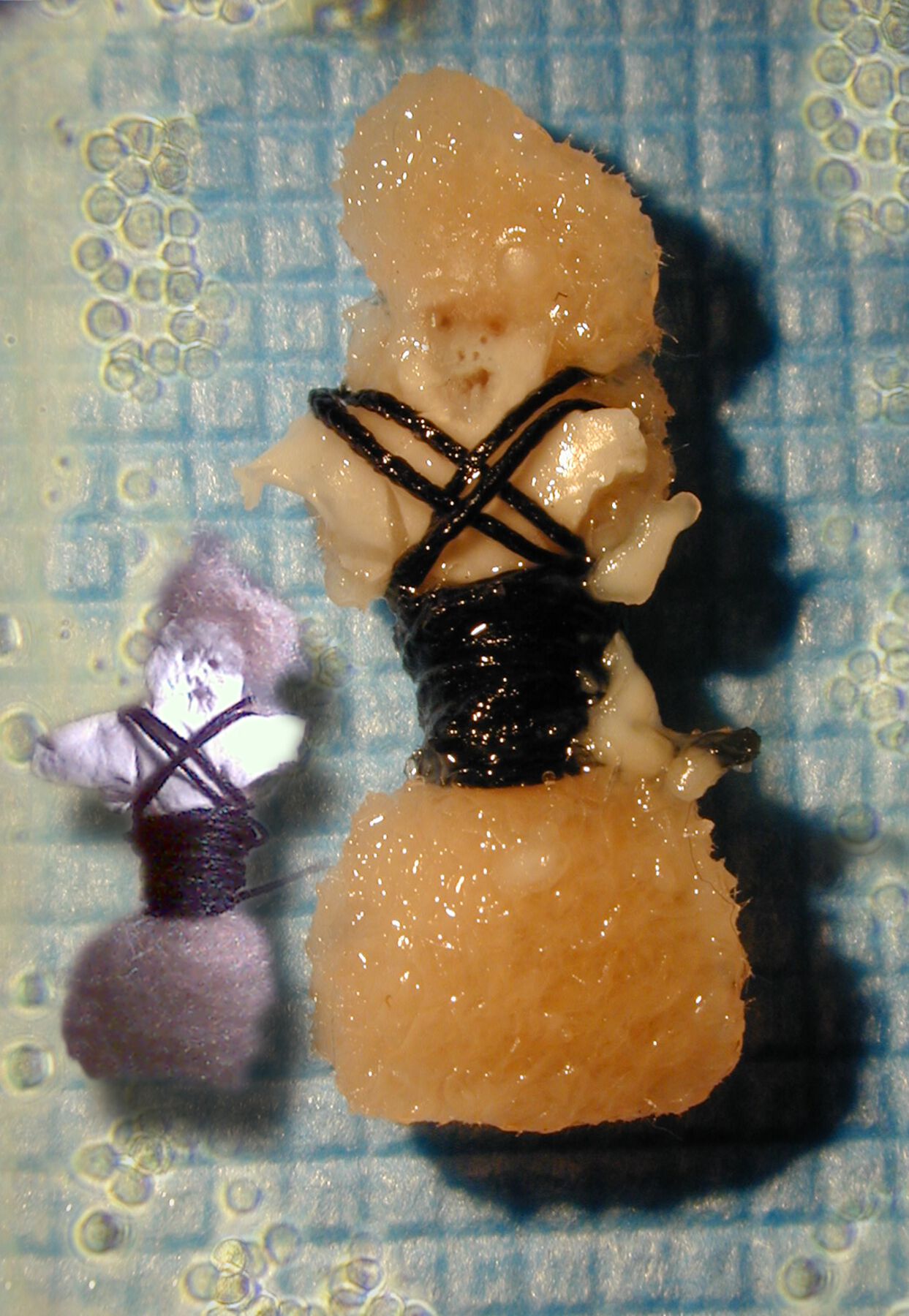
Wherever it goes, semi-living art is in need of a sterile environment, as its crucial vulnerability is the lack of an immune system. Thus, TC&A Project provides museums and galleries with the necessary equipment and instructions to maintain the works. In order to protect the semi-living from its surroundings, a fully functional laboratory is an integral part of any exhibition (fig. 3.8). This involves an enclosed environment at bio-safety-level 1 provided by a sterile hood for the bioreactor.6 In addition, the cells must be fed on a daily basis with specific nutrients and biological agents, which in turn produce waste that needs to be removed (, 367; , 5–6). All these tasks are either performed by the artists or carried out by museum staff, in the latter case transforming the curators into their literal definition as caregivers.
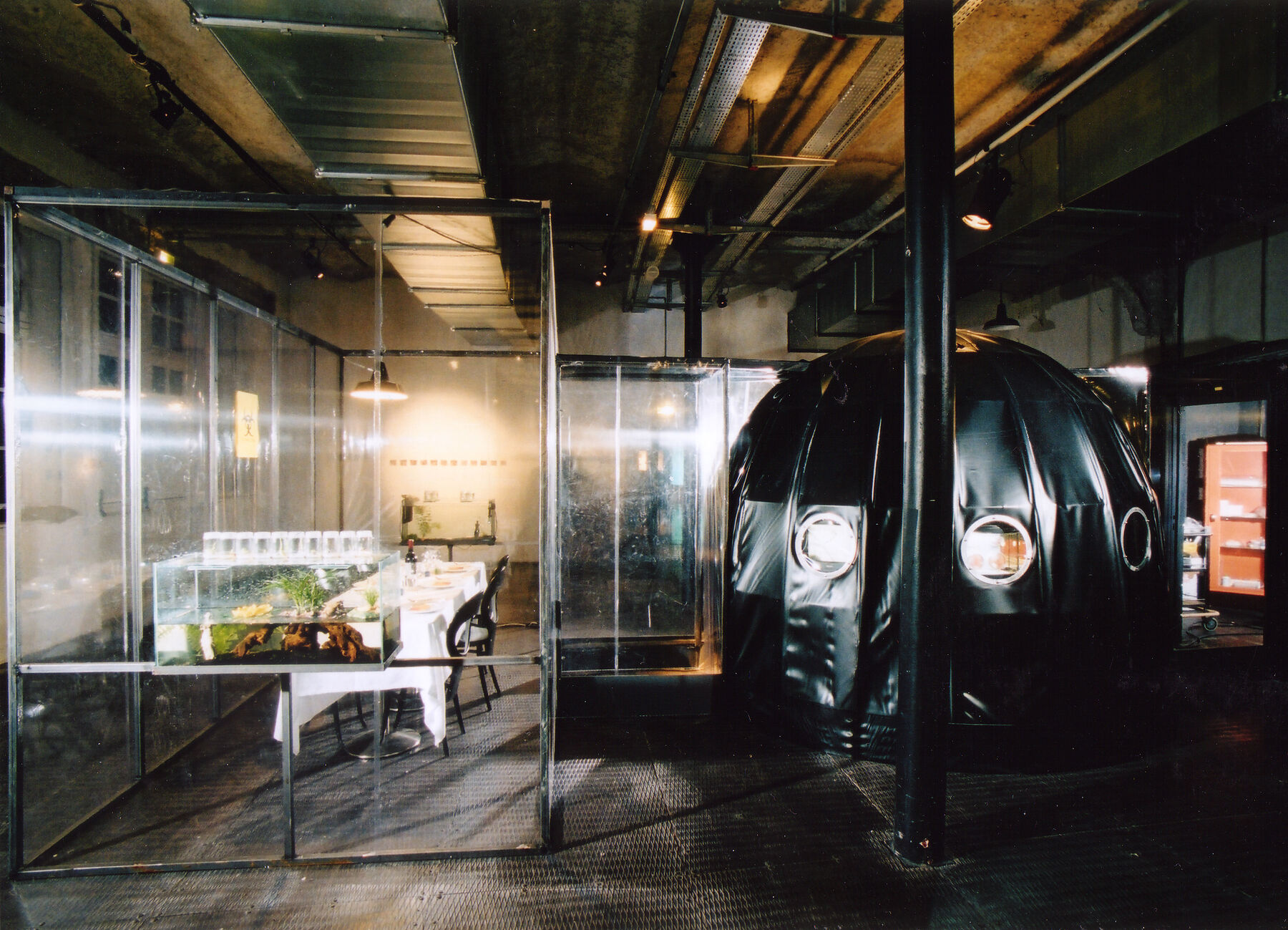
The constitutional guarantee of scientific and artistic freedom covers not only the work produced but also the effect the work produces. The effect of living art in turn generates affect in the viewer, resulting in socially and ethically motivated questions such as: Of what exactly does the semi-living consist? Is it alive and sentient? To whom does it belong? On a purely legal level, these questions are framed by the laws that allow tissue culturing under certain requirements and are complied with by the artists involved. There is no property right over body tissue. Research, manipulation, growth, and mutation of human cell and tissue material is allowed unless it is done before the sixteenth division of a totipotent (embryonic) cell. This is valid in the United States and most European countries, but not Germany. For example, TC&A Project had to apply to the Human Ethics Committee of the University of Western Australia, which issued an executive decision stating that the animals, humans, and materials used in their projects be treated according to the ethical rules applied to scientists.7
Just like any other living system, semi-living organisms are doomed. When they are publicly placed in the gallery space and exposed to voluntary human touch, they are contaminated by the fungi and bacteria in the air or on people’s hands and inevitably die.8 The removal of the semi-living from their sterile environment at the end of the exhibition has come to be known as the killing ritual: “The Killing ritual also enhances the idea of the temporality of living art and the responsibility that lies on us (humans as creators) to decide and act upon their fate” (, 6).9
Conclusion
All of the works of art discussed above—Marc Quinn’s blood heads, ORLAN’s hybridizations, and TC&A Project’s semi-living works—have proven to be exhibitable, curatable, and, if needed, preservable in the museum space. The museums who host them face biological, medical, legal, and ethical challenges, to which enlightening and promising solutions have already been given by the mere existence of these works of art. The uncontrollability of the new materials used in contemporary art practices points to the need for an extended catalog of vantage points to evaluate the proper handling of such artworks. The work of art in the age of genomic reproduction (as Benjamin might put it)—the duplicated, multipliable, hybridizing, and presently still thriving artworks discussed above—certainly does not lack a peculiar, and quite particular, aura. The aura is on the rise, as the potential of growth is intrinsic to these works.
Notes
Pun not intended but nice. ↩︎
The work was presented with a custom-made bioreactor, marking the head of the larger-than-life model of the Harlequin that was indicated by colorful diamond shapes on the gown. ↩︎
Author email correspondence with ORLAN, July 27, 2016. ↩︎
ORLAN is also working with Sub’Biotech, the Higher Institute of Biotechnologies of Paris. Author email correspondence with ORLAN, July 27, 2016. ↩︎
The founding members were Oron Catts and Ionat Zurr; from 1999 to 2003 Guy Ben-Ary became part of the collective. ↩︎
On a bio-safety-level 1 (BSL-1), only well-characterized agents with minimal hazards to humans and the environment are in use. That’s why the precautions are on a low level, consisting of washing hands, decontaminating potentially infectious agents before disposal, and a lockable door, providing limited access. BSL-1-level labs do not have to be isolated from the general site. The ease and safety of maintaining such a lab makes it suitable for schools or museums. ↩︎
TC&A Project’s pledge is registered at Human Ethics Committee, Research Ethics, Research Services, University of Western Australia, Project No. 0813, September 2003. As mentioned above, neither the cells nor the tissue culture possesses an agency or identity status and neither is yet biologically or culturally classified. This is why science and the arts are given unconstrained access and modus operandi concerning these objects. ↩︎
That is, visitors may be invited to touch the semi-living voluntarily—this is not exclusively the purview of museum workers. ↩︎
This decision is for practical reasons, as the semi-living is not allowed to travel or cross borders and usually no one is willing to adopt it. For those feeling guilty about euthanasia, TC&A Project has developed the De-Victimizer (2006), a kit with instructions to build a bioreactor in which to keep the semi-living alive. ↩︎
Bibliography
- Benjamin [1935] 2006
- Benjamin, Walter. (1935) 2006. Das Kunstwerk im Zeitalter seiner technischen Reproduzierbarkeit = The Work of Art in the Age of Mechanical Reproduction. Frankfurt am Main: Suhrkamp.
- Bouchard 2010
- Bouchard, Gianna. 2010. “ORLAN Anatomized.” In ORLAN: A Hybrid Body of Artworks, edited by Simon Donger, Simon Shepard, and ORLAN, 62–72. London and New York: Routledge.
- Catts and Zurr 2002
- Catts, Oron, and Ionat Zurr. 2002. “Growing Semi-Living Sculptures: The Tissue Culture & Art Project.” Leonardo 35 (4): 365–70. http://www.tca.uwa.edu.au/atGlance/pubMainFrames.html.
- Catts and Zurr 2003
- Catts, Oron, and Ionat Zurr. 2003. “Are the Semi-Living Semi-Good or Semi-Evil?.” technoetic arts—an international journal of speculative research, no. 1 (2003): 1–12. http://www.tca.uwa.edu.au/atGlance/pubMainFrames.html.
- Hauser 2008
- Hauser, Jens. 2008. “Observations on an Art of Growing Interest: Toward a Phenomenological Approach to Art Involving Biotechnology.” In Tactical Biopolitics: Art, Activism, and Technoscience, edited by Beatriz Da Costa and Kavita Philip, 83–103. Cambridge, MA: MIT Press.
- ORLAN 1998
- ORLAN. 1998. “Intervention” (1995). In The Ends of Performance, edited by Peggy Phelan and Jill Lane, 315–27. New York: New York University Press.
- ORLAN 2010
- ORLAN. 2010. “The Poetics and Politics of the Face-To-Face.” In ORLAN: A Hybrid Body of Artworks, edited by Simon Donger, Simon Shepard, and ORLAN, 103–18. London and New York: Routledge.
- Quinn 2007
- Quinn, Marc. 2007. “Genomic Portrait.” In Signs of Life. Bio Art and Beyond, edited by Eduardo Kac, 309–11. Cambridge, MA: MIT Press.
- Self 2009
- Self, Will. 2009. “Bring Me the Head of Marc Quinn!.” http://marcquinn.com/assets/downloads/Bring_me_the_Head_of_Marc_Quinn_Will_Self_FULL.pdf.